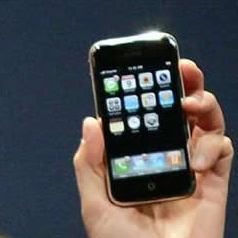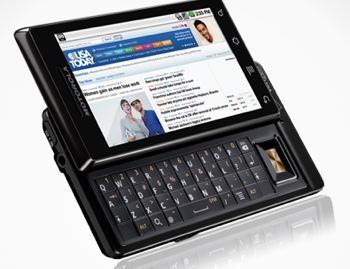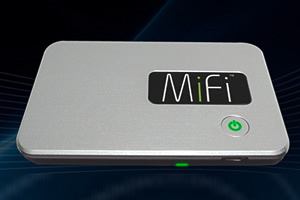Travel News
Reducing Your Travel Phone Bills: Saving Money On Global Calling
 A world business traveler armed with two phones and a data card realized he was paying $3,000 in wireless services in a single year.
A world business traveler armed with two phones and a data card realized he was paying $3,000 in wireless services in a single year.
So gadget guy Phil Baker set out to find a solution that would reduce his annual costs without missing a call.
As I was preparing my taxes last week I was startled to discover that I had spent more than $3,000 for cellular and wireless services in 2010: My AT&T iPhone at $105 per month, a Verizon Droid X for $78 per month, and a Sprint MiFi Data card at $63 per month.
Why two phones? I use the Verizon Droid X for important conversations and conference calls with business clients to avoid dropped calls that are so prevalent with AT&T. I’ve continued to hold onto my AT&T iPhone because of the iPhone’s other features and its worldwide compatibility. And I do use the iPhone for most other phone calls.
I have a 450-minute monthly plan on Verizon and a 900-minute plan on AT&T, but use only 800 total minutes each month. While I may not be typical, I’ve been surprised at how often I run into others who carry two phones for much the same reason.
I already plan to replace the Sprint card using the iPhone’s new Wi-Fi hotspot option for $20 per month and save $43 per month or $516 per year. While it offers less data, it’s adequate for my use.
Get more money-saving tips with Phil Baker’s article International Cell Phones, Data Plans, MiFi Data Cards and Google Voice
 The first assumption I examined was whether Verizon’s iPhone really has fewer dropped calls than AT&T. My wife, Jane, bought a Verizon iPhone 4 shortly after it was introduced. In two months of use in San Diego and the Bay Area, she experienced just one dropped call. And that was when she was talking to me on my AT&T iPhone!
The first assumption I examined was whether Verizon’s iPhone really has fewer dropped calls than AT&T. My wife, Jane, bought a Verizon iPhone 4 shortly after it was introduced. In two months of use in San Diego and the Bay Area, she experienced just one dropped call. And that was when she was talking to me on my AT&T iPhone!
In my testing of a Verizon iPhone I did get a few dropped calls, but closer to a couple a week instead of several a day.
Marty Cooper, a friend who is the inventor of the cellphone, and I decided to conduct a simple experiment. We drove around San Diego and measured the signal strengths of the iPhones from Verizon and AT&T, along with my Motorola Droid X from Verizon and a Motorola Atrix phone from AT&T as control samples.
Surprisingly, we rarely ever found an area where there was no signal on any of the phones. But in most locations the signal strength of the Verizon phones was generally either one or two bars stronger than the AT&T phones. Rarely was the AT&T signal stronger. The Atrix and Droid X showed similar results as the iPhones.
Now, as Marty explained, signal strength alone does not correlate completely with dropped calls. That’s the result of how well the network handles and prioritizes the calls, particularly in high-usage areas, and is a function of the equipment used at the cell towers.
Without conducting extensive measurements using specialized equipment, the best measure of dropped calls is based on first-hand experience. And by all accounts Verizon has this nailed.
 So if I did buy a Verizon iPhone, I could get rid of the AT&T iPhone and save $1,020 per year. (Eliminating $105 per month I pay AT&T, minus the $20 cost to increase my minutes from 450 to 900 on Verizon, equals $85 per month or $1,020 per year.)
So if I did buy a Verizon iPhone, I could get rid of the AT&T iPhone and save $1,020 per year. (Eliminating $105 per month I pay AT&T, minus the $20 cost to increase my minutes from 450 to 900 on Verizon, equals $85 per month or $1,020 per year.)
The second part of my analysis was that I need a phone to work internationally. I travel four or five times a year to Asia and Europe: Verizon phones don’t work in Europe, and work in a only a few regions of Asia. So if I were going to switch to Verizon I’d need a solution for international calling.
I could rent a SIM card and phone in each country I visit to use with an unlocked GSM phone, but it’s often inconvenient to find a store upon arrival, and you’d get a new phone number that you would need to provide to others. That number would be local to the country and others calling you would need to pay for an International call. Additionally, you would need a different SIM card and number for each country.
Calling costs are usually the lowest calling within the country (20 to 40 cents per minute) but more expensive calling the U.S. and you have to pay for incoming calls as well. Obviously not a good solution.
So what are the other alternatives for international use?
 Verizon offers its customers a Global Travel Plan when travelling internationally. It will lend you a world phone (CDMA/GSM quad band) that works in most countries with your regular cellphone number moved to it while traveling. You now can use it in any country to make and receive calls at Verizon’s roaming rates, similar to the rates AT&T charges.
Verizon offers its customers a Global Travel Plan when travelling internationally. It will lend you a world phone (CDMA/GSM quad band) that works in most countries with your regular cellphone number moved to it while traveling. You now can use it in any country to make and receive calls at Verizon’s roaming rates, similar to the rates AT&T charges.
For example, Verizon charges $1.29/minute in France and $1.99/minute in China for both outgoing and incoming calls. There’s also a $20 charge for two-day shipping both ways and is limited to trips 21 days or less. That’s doable but still not very convenient since I would have to do this for each and every trip that I take and plan in advance.
But I found another alternative that’s much more interesting. The company OneSimCard provides a single SIM card that works in nearly every country in the world. They provide you a card that works with any unlocked GSM phone or they can sell or rent you a phone.
For a small additional fee of $20 per year they will assign a second local U.S. phone number to that card so that others can call you from the U.S. at local rates or you can call-forward your U.S. cell phone to this number.
The rates are very reasonable to call from international locations to the U.S. or anywhere else in the world: calls from the UK are 39 cents/minute, France 49 cents, and China 75 cents. In most countries you don’t pay for incoming calls.
Find more great travel gadgets with Gadget Guy Reviews: The Best Gadgets of 2010
 Their unlocked phones cost $70 to $250 to buy or $20 to $35 for one week and about half that amount for additional weeks. Clearly if you are a frequent international traveler it makes sense to buy an unlocked phone. (The company offers a 15 percent discount to the military).
Their unlocked phones cost $70 to $250 to buy or $20 to $35 for one week and about half that amount for additional weeks. Clearly if you are a frequent international traveler it makes sense to buy an unlocked phone. (The company offers a 15 percent discount to the military).
As for data access, it’s very expensive using any of these plans and my best advice is to use Wi-Fi at your hotel or a local coffee shop. Or rent a country specific MiFi card, reviewed in an earlier column–check out that article here.
So what did I do? After doing the analysis, I bought a Verizon iPhone, an unlocked GSM phone, and $100 in prepaid calls. I put the AT&T iPhone on eBay that will cover the cost of both the new Verizon iPhone and AT&T’s early termination fees.
This will allow me to use a single U.S. phone. This will save me $820 per year ($1,020 minus $200). And I’ll save much more paying an average of 60 cents a minute instead of perhaps $1.60 per minute when I travel overseas. On a typical trip, one hour of calls will save me $100. On four trips that’s $400.
So my $3,000+ per year wireless cost will now be reduced by $820 (voice) + $516 (data) + $400 (international calls) = $1,736. I’ll be paying about $1,260, a savings of 58 percent. And best of all, fewer dropped calls.
By Phil Baker for PeterGreenberg.com. Read Phil’s blog here and check out his book, From Concept to Consumer: How to Turn Ideas into Money, available at bookstores everywhere and as an e-book on the Nook and Kindle.
Related links on PeterGreenberg.com:
- International Cell Phones, Data Plans, MiFi Data Cards and Google Voice
- Everything You Need To Know About International Calls
- Gadget Guy Reviews: The Best Gadgets of 2010
- A Traveler’s Holiday Gift Guide For Families
- Tech in 2010: Privacy Is Dead, Let Google & Facebook Take Over For TSA
- Wheeled Luggage Reviews: The Good, The Bad & The Ugly
- Top Travel Accessories: Don’t Leave Home Without These Gadgets
- Great Gadgets for Road Trips: GPS, Phones & Satellite Radio
- Gadget Reviews: Best New Bluetooth Headsets
- Thin Is In: MacBook Air Vs. PC Thinkpad
- The MacBook Air Review: Travel-Friendly Computing?
- Travel Gadgets & Gear section












